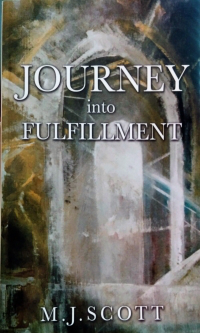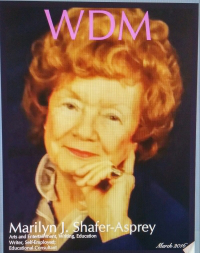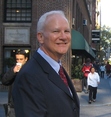Daniel Wetta's Blog, page 5
June 6, 2016
Day 4: A Story in Six Days, a Prize on the Seventh!
Hello, readers! This is the fourth installment! I am serializing my 9,000 word short story, “Nightfire!”, for a fun way to read a story over six days. On the seventh day, I am going to ask a question about the story, and the first three persons who e-mail me the correct answer will receive a $20 Amazon gift card. If you missed the first three episodes, don’t worry: There are links to them just below this paragraph. “Nightfire!” is a prequel to the novel, Corvette Nightfire, and like the novel, it is full of love, heartbreak, crime, danger and heroism. Have fun with this, and I hope it whets your appetite to read the novel!
Episode Four
The stolen vehicle shop was several kilometers north of the border at a small Texas settlement known as Presidio, where several hundred residents lived. Día and Luna often took vehicles from Presidio across the Rio Grande River into Ojinaga, Mexico by pulling a two-vehicle trailer behind a heavy-duty pickup truck. They had false papers identifying them as employees of a wholesale dealer who bought used vehicles in the United States for dealers and customers in Mexico. Several of the agents at the Presidio crossing were receiving money from the cartels not to look closely at the vehicles and not to worry about Día and Luna. The Mexican cartel hombres hungered for the big American cars, especially Chevrolet, Cadillac and Ford. Día sometimes unloaded the vehicles in Ojinaga, and sometimes he took them all the way to the principle city with the same name as the state: Chihuahua.
While Día and Luna lived in Texas, as they heard rumors of Rarámuri lands being seized by the Sinaloa cartel in the Copper Canyon, as they learned about the deaths of Rarámuri people being murdered for resistance to the drug-running or for failures in the eyes of the cartel, Día increasingly considered plans for their escape from the dangerous life into which he and Luna had fallen. He saw the stolen cars as a way out. He dreamed that while he had the trust of the cartel, he and Luna might escape in one of the stolen cars that they were delivering to Mexico. There, he and Luna might find a place to build a secret life somewhere. He knew that the cartel would try to find him, so he and Luna would have to abandon any ideas of returning to their families. He would not lead the cartel to them! So whenever he was on the road to Chihuahua, he kept his eyes peeled for road signs that might give him ideas about where to go. At road stops, he conversed with strangers to learn where they were from and what their home communities were like. He sought a hiding place where he and Luna might begin a family.
But fate put into motion events leading to a different destiny.
One afternoon, Día was with Luna in a small community grocery in Presidio, when Luna grabbed her stomach and doubled over in pain. She fell to her knees on the floor. As Día ran to her, he saw a white woman rush to her aid. The woman was asking what was wrong in English, but Luna was answering in Spanish. Día heard Luna’s distressful cry of “Bebe! Bebe!” The woman understood enough Spanish words to get the gist of Luna’s responses, and with Día’s help, she got Luna to her feet, and they took her to a bathroom in the back of the market.
This was another time when Día did not know that Luna was pregnant. He found out later in the afternoon that Luna had only spotted blood. After a long time in the bathroom, the woman consulted her husband at the door, who had come into the store, and then they decided to find Luna some medical help. They got Día to understand to follow them. After putting Luna in the back seat of their car, a cavernous white 1960 Oldsmobile 98 sedan, the couple drove to a house outside Presidio, where a general practitioner had set up his office, and he examined Luna. Finding her to be okay, but stressed, he ordered bed rest for her. The older couple collected Luna and drove to their ranch several kilometers north. Día followed. He smelled the onions and cantaloupes being grown on the farm as they approached their ranch house. He could smell their fragrances even inside the home as that afternoon and evening wore on.
Despite the scare that Luna had lost another baby, this day became for Día one that claimed a sweet corner in his heart. For years he remembered the gratitude on Luna’s face and her bond with the Texas woman, who had come to her aid like a doting mother. Día turned to this memory often later, whenever he was feeling desperate and missing Luna more than he thought he could stand.
The baby did survive in Luna’s belly. Día could see the trust developing between Luna and the kind rancher woman even that first night. The woman struggled to communicate with words of Spanish, and Luna, seeing the woman’s comfort with English, began to learn and repeat English words that very evening. Luna’s facility with languages and her cleverness were things that made Día yearn for her. He had always been in awe of her intelligence and quickness in learning. He often remembered watching Luna with the woman that night and recalling the heat that he had felt for Luna in his body. He had wished that he could be alone with Luna in the ranch house. It made him smile to remember that.
Very quickly, by the next afternoon as Día recalled, it became settled among him, Luna, the woman and her husband, that Día and Luna would move from the small apartment that they had inside a rooming house in Presidio to a vacant wooden bungalow in the back quarter of the farm. The ranchers offered that Luna could help the woman with the farm and household duties, and the woman would be able to care for Luna as her pregnancy came to term. The ranchers believed (as Día and Luna had told them) that Día worked on cars and occasionally sold some, which he delivered to Mexico. Hearing that, the woman asserted that it would be much safer for Luna and the baby not to travel with Día, as she had been doing. Luna would assist her as compensation for their new living quarters, she said.
The arrangement produced a brief period of stability, at least for Luna, and the sense that they might have a family after all. As Luna’s belly grew in the months that followed, she and the older woman strengthened in their friendship. The baby was born in 1961. They considered Rarámuri names. Luna and the rancher woman exhausted many conversations discussing possibilities. Luna saw that the Rarámuri names were difficult for the rancher woman, whom she had come to love. The woman kept returning to the English name, Roger, but the Spanish name for Roger, Rogelio, sounded similar to a Rarámuri name that Día liked. So the baby was named Rogelio. He came out of Luna flailing and kicking, a beautiful boy in graceful motion, like he was dancing. The boy loved to dance as he grew. Día saw in the next couple years that no one could look at Rogelio without falling instantly in love.
Día let himself become lulled into calmness by feeling the domesticity of life on the ranch when he was at home. But the work taking cars into Mexico became increasingly risky. There was constant turnover in the cartel, and Día found himself repeatedly dealing with people whom he didn’t know. Certainly, none of them were men to be trusted. He knew their homicidal natures. And every new man appearing in his shop already knew a lot about Día, where he lived, where he came from, his skills, and that Luna worked with him. They mentioned this information to him with painted smiles and murderous eyes. None had mentioned the baby yet, but as Rogelio grew and Día loved him more and more, he became increasingly apprehensive about his baby’s future. At night in bed, Luna also whispered her anxieties to him that Rogelio was endangered by the lives of his own parents! She told Día that always she felt the presence of cold, invisible eyes.

 [image error]
[image error]
[image error]
[image error]



June 4, 2016
Day 3: A Story in Six Days, a Prize on the Seventh!
Hello, readers! This is the third installment! I am serializing my 9,000 word short story, “Nightfire!”, for a fun way to read a story over six days. On the seventh day, I am going to ask a question about the story, and the first three persons who e-mail me the correct answer will receive a $20 Amazon gift card. If you missed the first two episodes, don’t worry: There are links to them just below this paragraph. “Nightfire!” is a prequel to the novel, Corvette Nightfire, and like the novel, it is full of love, heartbreak, crime, danger and heroism. Have fun with this, and I hope it whets your appetite to read the novel! At the end of this episode, there is an explanation of the story’s timeline.
Episode Three
Luna began to run with Día across the border. She ran like all the Rarámuri women: in the long colorful traditional dresses of her people. She was a superb athlete who managed to carry a pack on her back more than half the weight of Día’s. They learned more routes. They spent more and more time in the Mexican towns. Día picked up new skills. He learned the mechanics of the trucks and cars that were provided to him to service. They were old, and they broke down often. He sometimes had to replace parts with some that he knew had been stolen. Then vehicles began to arrive for him on flatbed trucks. These had no keys. Día learned to start them by touching the starter wire to the ignition and battery wires that he had entwined together. He installed new ignition-key mechanisms. The Mexicans made him work on these vehicles in a hurry, and then they raced them away, sputtering smoke and dust. His joy in work came from what he desired most: fast cars and trucks that he could keep for a while, until something better came along for him.
Luna sat close by when he worked. She didn’t trust the conversation of the chabochi women in the bars and places where the women of the men remained. In her heart, she wanted to return with Día to her old life.
He found out in this manner: One cold night, during one of their runs, Luna collapsed, and Día rushed to her. She was bleeding profusely from her vagina. She had lost a baby very early in pregnancy. He had known nothing of her pregnancy. Día held her tightly, and they both cried as she made a confession:
“We make love all the time because I have wanted to have a baby so badly! I thought that this would make you come back to our home with me and stay. I have lost two others, Día! You didn’t even know. I think this running is not permitting me to develop babies.” Then she sobbed a long time while Día’s heart broke from the awakening to his selfishness. That night he vowed to himself that they would return to their people. He realized that he had not once thought about bringing chabochi wonders to help the Rarámuri, as he had once intended, nor had he made any impact on the chabochi to respect his people.
They were, of course, late delivering the packs that night. It was almost dawn before they met up with the men who awaited the bags. One rushed behind Día and grabbed him from behind, immobilizing his arms. The other seized his pistol and pointed it at him, while Luna screamed. He then pointed it in the air and fired all the bullets. The man holding him released him. Then, with ugly and menacing words, the men told him that they had killed Rarámuri runners who had failed them. Día felt terror, not by the threat of death, but by the way they cast pig-eyes on Luna.
But, in the end, the men walked them a distance to a road, just as it was getting light. They put Día and Luna in the front seat of a car and handed some papers to Día.
“You will take this car into Mexico,” one of the men said, speaking to him in a combination of Spanish and the language of the Rarámuri. “In a short time, you will come to the border where they will stop you and ask for papers. You won’t understand them. Just show the man these papers, and they will let you through. Don’t speak. Keep driving until a couple of trucks come and signal you to pull over.”
In the months that followed, Día witnessed more and more Mexican men from the cartel arriving in Creel and disbursing to plots of land in the mountains where they were growing marijuana and poppy. He and Luna began to learn Spanish, especially Luna, who had an aptitude for the language. She was good at putting words together, Día thought. They learned that demand for the products of the cartel was increasing, because in the United States a middle class with young, rebellious people who liked rock-‘n-roll music enjoyed social activities and types of partying not occurring in Mexico. Día saw more men arriving with guns daily. He stopped looking for his family in the canyons. He worried about their safety and feared he might lead the cartel members to them. He didn’t want his parents to know what he had been doing, and he didn’t want his brother to become influenced as he had been.
I run a fever in my spirit, he thought.
And he worried incessantly about Luna. He had to keep his eyes on her to protect her from the chabochi men around, who were removed from their women and who looked with lust at Luna’s beautiful body. In addition, he took to heart what she had told him. She was not having babies. She was losing them. Perhaps the running was taking its toll, as she had theorized. Nearly three years had passed since they married, and even more years since they first made love, and they still did not have a family.
The memory of Luna’s bleeding in the desert haunted him. The spiritual wretchedness of their lives, totally his fault (he believed), evoked this thought: How could we possibly have a family while living as we do?
One day, when an important leader of the cartel showed up to discuss something with him, Día had the first intuition of a possible escape for him and Luna.
He was covered in grease and working under a truck when the man showed up in the crude, wooden shop off the main road running through Creel. A group of beefy Mexican men arrived with him, and a couple of them with rifles posted themselves by the door.
The man wanted Día to run stolen cars. “You are good with the cars and trucks,” he said. He seemed to know a lot about Día. “You can start them quickly, and you drive fast. We have a shop in Texas where we change vehicle numbers and strip or prep the cars we get. We prepare papers for border crossings. We pay some of the border guys to look not so closely at the cars. Some of the trucks can be driven off roads to avoid border crossings. We take orders for vehicles in Mexico. So each car is chosen for a purpose. Some we keep for ourselves. You can have your pick at any time. Sometimes you will bring cash back to us from our sales and services up there. Sometimes weapons. We will teach you how to make hiding places in the vehicles for these things. Your wife…she can run for us still, or she can help you. It looks good at the check points to see a married couple in the cars. She can be with you. Your choice.”
The choice to make was obvious.
And they did look handsome in the cars, even if Luna always seemed nervous and unsettled until they arrived at the border, where she managed to produce charming smiles for the border agents. It was a disarming tactic which Día told her would help them get through to Mexico. Luna could do anything that Día asked her to do. He had been the center of her world since she was a child. They would arrive at the check point, Día dressed like a Mexican cowboy, Luna in her beautiful, traditional dresses. Día’s clothing was one practical use that they had found for the cash that the chabochi gave them. The Rarámuri women, knowing only poverty, wore their dresses for weeks before cleaning them. Many only had one. Día had Luna acquire more dresses at a roadside trading stand in Creel, so that she would always have something clean for the crossings. He had developed sensitivity for cultural differences in the north of Mexico and in the United States as a function of always needing his wits about him in his work. He worried that, over time, he might feel less Rarámuri and more chabochi. He wondered if Luna sensed that she was changing: At the border, when his Spanish failed him, Luna picked up the conversation with ease. He felt to blame for the dilution of her cultural identity. He felt shame. It was the reason that he liked to see her in the traditional dresses. It made him feel less bad about things.
Timeline for the first three episodes
When the story opens, Rahui (Día) is ten years old. It is 1948. We know this because the story tell us that WWII had ended three years earlier, in 1945. Día, then, was born in 1938. Día sees Luna for the first time at his cousins’ home, when he is ten.
Día meets the Mexican youths in Creel when he is 16 years old (1954). There are historical references to the railroad in that region that began construction in 1862 and was completed in 1962. Also, there is reference to the fact of marijuana and poppy cultivation by people from Sinaloa in Día’s homelands for nearly a century.
Día makes his first run across the border for the cartel of Sinaloa when he is 17 (1955). He runs for them for a couple years before marrying Luna, when he is 19 years old (1957).
Over the next few years, Luna runs with Día, carrying drugs in packs. Día, always obsessed with speed, acquires mechanical skills in servicing cars and trucks during this period. The story moves into the early 1960s as Episode Three concludes.
Note: I apologize to a reader who sent a comment to me about the timeline, because, in trying to look at it on my phone application, I must have accidentally deleted it. I hope this clarifies the time period of the story thus far.







Day 2: A Story in Six Days, A Prize on the Seventh!
Hello, readers! This is the second installment! I am serializing my 9,000 word short story, “Nightfire!”, for a fun way to read a story over six days. On the seventh day, I am going to ask a question about the story, and the first three persons who e-mail me the correct answer will receive a $20 Amazon gift card. If you missed the first episode, don’t worry: There is a link to it just below this paragraph. “Nightfire!” is a prequel to the novel, Corvette Nightfire, and like the novel, it is full of love, heartbreak, crime, danger and heroism. Have fun with this, and I hope it whets your appetite to read the novel!
Click Here to Read Episode One
Episode Two
The seduction of the roads was what had drawn Día into the foreign world. His family and generations of ancestors had run the often faint paths of the mountains and canyons. They had eluded the civilization that had kept coming their way. For one hundred years, the chabochi had been building the one-passenger railroad through the harsh stoniness or verdant thickness of their vast land. It connected Chihuahua, the city, with the Pacific Ocean in Sinaloa, and it passed through dozens of mountain tunnels and bridges in the land of the Tarahumara (as the chabochi called Día’s people). It was finally completed in 1962. It made stops in Divisadero, where the passengers disembarked to gawk at the canyon, and in Creel, which, in Día’s youth, was a lumber village. The day that Día first saw Creel was as important a day as when he first had set eyes on Luna. The wide dirt boulevard in the middle of the town allowed the cars and trucks to pass to-and-from a world that the young man could not imagine well. Día stared with wonder at the broad flat road. He saw a running path that did not hide in the rocks and brush.
Surely only goodness can be at the opposite ends of a road such as this, he thought. He conveyed his opinion to Luna, who believed him.
Then, when he was sixteen, in Creel, he met the two older Mexican youths who affirmed what he had suspected: that the chabochi paths led to unimaginable wonders. The young men had arrived in a powerful black truck and were dressed in clean cowboy clothes and boots. Día made a quick assessment:
Maybe the chabochi don’t believe in the sharing and are selfish people, as my parents say. But maybe Luna and I can get good things for our people in the outside world and teach them how to deal with chabochi. If the outsiders see us strong, maybe they will respect our ways. We should influence the chabochi.
The youths were from Sinaloa. Día saw that their eyes had been assessing his body. Through short sentences and gestures they communicated a teasing challenge: They wanted to race, and they pointed to a sign that could be seen about two kilometers from them on the road. Only one ran. The other leaned against the truck. It was hardly a contest. Día stopped half-way and waited for the older boy to reach him, and then he shot off ahead to the sign and remained until the youth arrived. The other boy drove the truck to them and indicated that he would race Día back to the town. But when Día started to run, the two jumped in the truck and gunned it past him, bathing him in a swirl of dry road dust. Día got the message: the Rarámuri might run for days, but the roads and vehicles of the chabochi sliced time and distance into moments of flying scenery.
While his father traded articles in the town and drank with friends, the boys put Día behind the wheel of the truck and taught him its operation on the wide road to the end of the town. At first the truck jerked and shook and cut off as Día missed gear shifts, but quickly he got the hang of it. The windows were down, and the rush of wind against his face as they sped pressed his skin stronger than any breeze that cooled him when running. The excitement of this made him feel the hardness between his legs that, until then, only Luna had given him.
Before they left him that day, the youths strapped a pack on Día’s back.
“This for you,” one attempted in his language. “To help you carry things. Keep this, but meet us here again. One day you run for us with this on your back. Then you have truck.”
When he showed his father the backpack later, the man shook his head. “The boys gave you this because you won the race?” he asked. Día knew that his father did not believe his lie, but he felt a strange shame and did not want to tell the whole story. He had an intuition that the thrill of what he had felt in the truck should be private. He thought that he would only tell Luna. His father stared at him, shrugged, and handed him a beer.
It was months before he saw the young men again, and Día had turned seventeen. He had left his family to go on a run, he had told them, and to visit cousins. He wore the pack he had been given. But instead of going to see cousins, he went to Creel. He did not even confide this to Luna until after he returned days later. He saw the chabochi faces staring at him as he walked through Creel, and in just a couple hours a black truck pulled to the shoulder of the road where Día sat cross-legged. The two young men jumped out of the truck to greet him, as did a third, an older Mexican man whom Día judged to be about thirty years old. They fed him and then put him in the bed of the pickup and drove him north. They stuffed his bag and explained that he was running out of Mexico across the border. He met a man who took the bag in the middle of the night. When he ran back, they picked him up the next day from a hiding place in a roadside shrine, a wooden structure in which he squatted beside a battered statue of the Virgin of Guadalupe. It protected him from the sun and the cold wind. They drove him to a lumber yard on the skirts of Creel and showed him an old Chevrolet pickup truck with a flat tire under a lean-to. They told him that it was his and that he could keep it there. They laughed and gave him another bag to take home.
“You run like a demon,” one said. His facility with the Rarámuri language had improved. “Come back in twenty days. We will show you more of the world. You like it a lot. We will have another run for you, and you can drive the truck. Do you have brothers and sisters?”
Día felt an instinctive leeriness in his heart. He heard faint echoes of his mother’s warning about the chabochi. He didn’t want them to know about his brother or Luna, whom he loved so deeply. So he answered them, “I only have a young brother, who is just a kid. Besides, I am the best runner of the Rarámuri. I can run for you. You don’t need others.” And they laughed again.
He ran for them sporadically the next couple of years. They showed him things: guns, which he didn’t like, and “dinero” (currency and coins), which held little interest for him. Those were the obsessions of the chabochi. His obsession became speed: the running through flat desert or the acceleration of trucks and cars. These made his blood race. He met many chabochi. Most seemed mean and threatening to him. He kept them away from his people, and he told his family little of his absences, except that he explained to Luna about the speed of the vehicles and the vast expanses of the roads.
“I am caught up in it,” he admitted to Luna one night. “My spirit soars to the heavens when the earth falls so fast behind me. My body feels like when we make love and I shout my joy!”
“You make love to danger,” Luna told him. “I am a jealous woman. You will not leave me behind. Soon I will come with you.”
“No!” Día protested. “That can never happen!”
“Yes,” she answered him. “Or I will marry your brother. He is my age. You see his eyes for me. If I would lose you to the chabochi world, then I would at least have him.”
Día was shocked. He realized that, during his absences, his handsome young brother could be with Luna if she allowed this. He did not let this worry stir long in his heart. He married Luna when he was nineteen and she was seventeen. It was 1957. From that time forward, he kept Luna by his side everywhere. She was beautiful and desirable, and he read the eyes of the chabochi who looked at her. He began to carry a pistol. He might need to protect her from the people who more and more revealed their treachery in a world colder than he had known could exist.







June 3, 2016
A Story in Six Days, a Prize on the Seventh!
Hello, readers! I am serializing my 9,000 word short story, “Nightfire!”, for a fun way to read a story over six days. On the seventh day, I am going to ask a question about the story, and the first three persons who e-mail me the correct answer will receive a $20 Amazon gift card. “Nightfire!” is a prequel to the novel, Corvette Nightfire, and like the novel, it is full of love, heartbreak, crime, danger and heroism. Have fun with this, and I hope it whets your appetite to read the novel!
Episode One
Slap-slap-slap-slap…the feel of this sound resonated throughout his body, even as a memory of years before. They were running on a level expanse of rocky path high on the mountainside before the trail took yet another descent towards the valley. Rahui took intense pride from the sounds of his huaraches (running sandals) on the rocks and dirt. He was ten years old, and already he could keep up with his mother. They had run for half a day, and he was still with her. They would be done before dark, because the weather was clear, and the crisp spring air refreshed them. His little brother lagged behind. Rahui and his mother stopped from time to time, until he was in view, and then they ran on, pausing again when they could no longer hear the boy, who was two years younger than Rahui. The father was ahead of them by far. Probably, he had just a short way to get to the village of Rahui’s cousins’ family. His father was fast and had been on many winning teams of the rarajipari races, in which the males competed with men from various villages. From past experience, Rahui knew that by the time that he, his mother and brother arrived at his relatives’ cabin, his father would already be feeling the effects of the “tesguino” shared by Rahui’s uncle: The corn beer would have his father talking too much and looking sleepy-eyed.
“Watch out for chabochi,” Rahui remembered his mother telling him for the first time on this particular run. The chabochi were the non-Indians, and since the great war had ended three years earlier, in 1945, the chabochi seemed to be encroaching at an alarming rate in the Copper Canyons. Rahui had heard his parents say that all chabochi were evil. They cared only about material things for themselves, and they did not believe in the sharing: the kórima.
That would be so sad, Rahui thought. Happiness only comes from the sharing.
He remembered thinking about the chabochi a lot on this particular run. Time and again, the chabochi had invaded the formidable canyons of las Barrancas del Cobre, the Copper Canyons, in the state in Mexico which his mother had told him was named “Chihuahua.” The Spanish chabochi had conquered the Indians centuries earlier and had imposed their Catholicism upon the Rarámuri indigenous people. They had proclaimed a loving and compassionate son of a god who would save them, apparently in exchange for the land that the Rarámuri inhabited. The indigenous people had adapted the new beliefs into their own cosmology. These days, his mother had explained, the chabochi coming in were Mexicans who were claiming the resources of their land as their own. Some were especially bad people who were growing marijuana and poppy in the mountains.
“They have brought us a language that they want us to learn. They make us use words for which we have no letters. They are confused people. They name us in Spanish but use our Rarámuri names for places. They do not even call our people correctly. We are the Rarámuri, the running people, but the Mexicans and the outside world call us the Tarahumara. They are confusing even us. Our own people are naming their children with Spanish names. In Spanish, your name, my son, is Día,” his mother told him.
He had to learn how to pronounce that because there was no letter “d” in his language. The Rarámuri had a pretty, lazy language that rolled with many colorful “r” sounds. Día was the word for “day.” When Rahui first saw Luna, he connected the meaning of his name to the sun. The Rarámuri believed that the Father-God was the sun. The moon represented the Female-God. He was struck by a lightning bolt of love the moment in which he first saw Luna. He pointed to her when the families were arriving at the meeting place on this particular trip and asked his mother who she was.
“Her family is friends with your cousins,” she answered. “The girl’s name is Luna. She is called by that Spanish name. It means, ‘Moon.’ She is a beautiful child. She casts glances at you, Rahui.” His mother laughed, expecting that he would be embarrassed.
But he wasn’t embarrassed. He told his mother, “If she is called by a Spanish name, then I also want this. She is ‘Moon’ and I am ‘Light of the Sun’. So I am the day. From now on, call me ‘Día.'”
If his mother had examined his face at that moment, she might have seen the nascent glow of comprehension in Día’s eyes: he was staring at Luna and instructing his destiny to steal her.
That year his father’s team won the rarajipari race that lasted two days. The men bulked up on the corn beer and slept at intervals the day before the race, while the women cooked. The women’s race started when the men’s race began, but theirs lasted only a day. Their race day was merry and full of conversation and giggles among the teams. The men were intense because their race was important. The running was the primary distinction of life for the Rarámuri. It marked their identity. It was their means of communicating among their people so sparsely dispersed throughout the forbidding canyons, mountains, and hills. The running Rarámuri carried the Word.
Along the path to the village that hosted the finish line of the men’s race, people set up torches to mark the way for the nighttime running. Each team of men kicked a wooden ball the entire route of the race. Día’s father finished first. He walked to a tree stump and sat, and young boys came up to him and began to massage his legs and feet.
The previous day, the team of Día’s mother also had won the women’s race. So this was the special time that Día remembered until the day that he died: He was old enough to understand his coming manhood. He witnessed the triumph of his parents in their prime. He saw Luna for the first time, and he stole her heart by showing her the look in his eyes.
And this was the time that he received the most impactful warning about the evil of the chabochi from his mother: “There are those who come from Sinaloa. They climb into the hills and take the lands of our people. They grow poppy and marijuana, and then they enslave us and make us run the harvest across the border to the gringo country,” she told her son. “If they approach you, run higher into the mountains. Don’t let them fool you with their sweet words or scare you with their guns. Do not listen to a word they tell you. They will trick you, because they use bad or weak Rarámuri who have learned their Spanish and who speak to us in our tongue to infect our minds.”
As she told him this, Día felt a stir of cognition in his soul, portending a dark destiny: Luna would be his light, and the chabochi were to be his night. His mother’s admonishment when he was ten years old left him feeling privately terrified.
He grew up looking more chabochi than indigenous. When he married seventeen-year-old Luna at age nineteen, Día was strong and filled out, not skinny like many of his Rarámuri friends. He liked to wear his hair long and straight. In a few years he wore a mustache. His mother told him that, at some time, one of his Rarámuri ancestors must have married a Mexican with Spanish ancestry. He didn’t have European features like a Spaniard, but he was tall like some of the men from the north of Spain and like many of the gringos whom they had seen. As Día matured, his body and appearance grew to reflect the influences of the outside world of Chihuahua, in Mexico, and of Texas and New Mexico in the United States. It was because he got bit by the chabochi and traveled their paths. Luna clung to him and went everywhere he went.
If you enjoy the story, I think you would love Corvette Nightfire! Rated 4.8 stars on Amazon and 4.3 stars on Goodreads, the e-book novel is only $2.99.
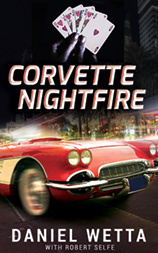
CLICK TO BUY ON AMAZON!







May 16, 2016
Daniel Wetta Update
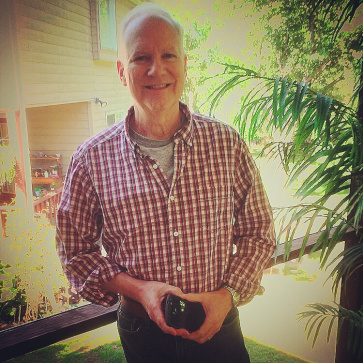 I lived in Mexico a few years ago during President Felipe Calderon’s “War on Drugs.” I suffered the mourning of a young friend who was kidnapped, tortured, shot, and left dead in a vacant field in his home city of Monterrey. Israel was a bright and handsome college student. The mistake that cost him his life was to meet the wrong person at a party: She was the estranged wife of a drug cartel leader in Monterrey, but she didn’t tell Israel. Their flirtation put an end to his life and the dreams for him of all who loved him. I was aware of the violence in Mexico when I arrived and tried to stay alert. After I came to make friends and saw that they courageously lived their lives in a world abundant with daily horrors and impunity, I realized how safely we lead lives in the United States. I learned that we know so little about how we contribute to problems in the country to the south of us.
I lived in Mexico a few years ago during President Felipe Calderon’s “War on Drugs.” I suffered the mourning of a young friend who was kidnapped, tortured, shot, and left dead in a vacant field in his home city of Monterrey. Israel was a bright and handsome college student. The mistake that cost him his life was to meet the wrong person at a party: She was the estranged wife of a drug cartel leader in Monterrey, but she didn’t tell Israel. Their flirtation put an end to his life and the dreams for him of all who loved him. I was aware of the violence in Mexico when I arrived and tried to stay alert. After I came to make friends and saw that they courageously lived their lives in a world abundant with daily horrors and impunity, I realized how safely we lead lives in the United States. I learned that we know so little about how we contribute to problems in the country to the south of us.
Israel’s murder began to haunt me a little more each day. I couldn’t forget him. I spent two years researching and understanding the violence of organized crime, especially that of the drug cartels throughout Latin America and the United States. I found out that on the demand side, the people in the United States purchase the majority of drugs coming from the Mexican cartels. On the supply side, our country is the biggest supplier of illegal weapons used by these cartels. These weapons have been responsible for at least 100,000 deaths in Mexico in the past seven years. Even the casual marijuana enjoyed in social gatherings in our country arrives to us with a lot of blood on its leaves. We don’t think about that at all. I do now. I think about my friend, Israel, and how he must have known when his murderers had him that no hero was going to show up to save him.
So I have some things to say about international relations between Mexico and the United States, but I say them through personal stories of heroic people on both sides of the border. I know that for people to engage enough to listen to me, they are going to need to relate to the characters I put before them. All the fictionalized people in my novels are based to varying degrees on real counterparts, or they are composites of people whom I knew or heard about. The incredible things that happen in the novels largely come from the news stories of Mexico and the United States. Do I need to say the cliché? Truth really is stranger than fiction.

The result of my time in Mexico was the writing of the novel, The Z Redemption. Its sequel, Corvette Nightfire, was published in April, 2014. Updated second editions of both novels came out in 2015. The third volume of the trilogy, tentatively titled El Camino Oscuro, is being co-written with Robert Selfe and should be published within the next year.
There are two free short stories related to The Z Redemption novels. The first, “Awakening from the Golden Sleep,” describes early adventures of Ana Valdez when she was a child in Mazatlán, Mexico, a resort city on the Pacific Ocean. In The Z Redemption, Ana is a main character who ends up being President of Mexico after a military coup overthrows the government. The second short story (of which I am especially proud) is a “prequel” to Corvette Nightfire. It is called “Nightfire!” It tells a fascinating story of Corvette Nightfire’s grandparents, Tarahumara Indians who became entangled with the Mexican drug cartel of Sinaloa. Their actions set up Corvette’s destiny, thrillingly depicted with tremendous suspense in the second novel. While working on the third novel with Robert Selfe, I plan also to write a short story related to it.
As for my bio, I am a retired Certified Public Accountant who spent most of my career in the health care field. For twenty years I was the CFO and then CEO of a Virginia hospital and nursing home in a large healthcare company. I wrote short stories as a young man, and at the College of William and Mary I really learned to write. I received my undergraduate degree in History there. Later I went to graduate school at Virginia Commonwealth University, where I got a post-baccalaureate certificate in accounting and then my Masters in Business Administration from the University of Dallas. I am a life-long lover of Corvettes, Las Vegas, and living on the edge. I am in love with my family, and I am passionate about United States and Mexican history, the Spanish language, and using social media.







Selfe-Taught Literature: The Novel
Prelude to the Novel.
Before my foray into the world of novel writing, I taught English at three schools, including thirty years at Ridgewood High School in New Port Richey, Florida. Like most English teachers, I taught grammar because it was required and literature because it was fulfilling. I taught poetry, essays, plays, and short stories; but, for me, the greatest joy was teaching the novel. Now that I am a co-author, I thought I would share some thoughts and explain some terms which, I hope, will add to your enjoyment of the novel.
My Background.
My love for literature began even before I could read. When I was a child, I relished adventure stories which usually took place in fantasy worlds. They sparked my imagination and helped shape my life. I was fortunate to have parents who read me stories about varied characters who had amazing adventures. At that time, I didn’t know about nor did I care about setting, plot, theme, or characterization. All I knew was that I was completely caught up in the people, places and events. The one constant, I believe, was that good, if it persevered, would eventually win out over evil. As I got older and learned to read, I found myself drawn to characters who I wished that I could be. The Hardy Boys solved mysteries, and Tarzan was the master of the jungle. I didn’t realize that these were formula novels and not great literature. I was just excited to be able to access these characters in book after book. So what if the plot was basically the same in each one? I also became obsessed with comic books about super heroes like Superman and Batman. I later discovered Sherlock Holmes, and I read all of Arthur Conan Doyle’s stories about the great detective.
In high school I discovered Ray Bradbury and Isaac Asimov, and thus began a life-long love of science fiction. For years I had been drawn to Greek and Norse mythology, and I think that fascination led to my discovery of J.R.R. Tolkien, my favorite fantasy writer. I was fortunate to have had good English teachers in high school who expanded my horizons. Required reading included: Of Mice and Men, 1984, To Kill a Mockingbird, The Catcher in the Rye, The Old Man and the Sea, The Great Gatsby, and more. Some of these novels had a profound effect; however, others left me flat.
It was in college that I finally became a mature reader. I discovered hidden depth and meaning that my superficial reading of earlier years had denied me. Two of my favorite novels were Catch 22 and Magister Ludi (The Glass Bead Game). I must admit that I never would have finished the first if not for an English Lit. teacher, and I wouldn’t have finished the second if not for my sister’s insistence. I’m grateful to both.
It was also in college that I gained my appreciation of what I consider the most important element of fiction: characterization. I owe that mainly to one man: William Shakespeare. I had read several of Shakespeare’s plays in high school; however, with the exception of Hamlet, I never understood what the big deal was. I think that part of the reason was that when I read the plays, my lack of familiarity with the language and the disconnect of having to constantly stop and look up words turned me off to the whole “Shakespeare” experience. In college, my immersion into the world of Shakespeare showed me his genius in wording and characterization. More about that later.
And now for the latest: I know that the English teacher who wants to write the “Great American Novel” is a cliché, but I am not that guy. I reluctantly signed on to edit my best friend’s novel, The Z Redemption; and my contribution lead to the collaboration which is Corvette Nightfire. All I want to do is write an entertaining story about interesting characters. Daniel and I are currently at work on a third novel. We hope you will enjoy it.

Literary Terms of the Novel.
Novel: An extended narrative, usually in prose, which deals with fictional characters and/or events, usually in a sequential story. Novels are grouped by category (Genre)
Genre: A category or type of story. Some (but not all) of the many and varied types include: romance, mystery, science fiction, fantasy, horror, thriller, crime, western, young adult, and historical fiction.
Setting: The time and place in which a series of events occur. Authors choose a specific time and place for the novel to begin, but they must also decide the span of time and range of locations to be covered. These choices also contribute to the tone and mood of the novel.
Time may be general or specific. Examples range from “once upon a time” to “as the seconds ticked toward midnight.” The author must decide when he or she wants the events to occur and the span of time which the novel will encompass. Sometimes the main part of the story will take place in a specific time frame, and the author will end with a final scene which takes place days or even years later (or, in some cases, earlier). Time can be used to build suspense, especially with the introduction of a deadline.
Place may also be general or specific. The story may take place in a small town or in the far reaches of the galaxy. The place may be one which would be familiar to the audience or one which exists only in the mind of the author. In this case, it is up to the author to communicate that world to the audience. This is most often found in science fiction and fantasy novels. In historical fiction, a specific location coupled with a specific time may indicate to the reader that a famous event is about to occur.
Tone and Mood are similar and are often confused. Tone is the author’s attitude toward the work: formal, informal, humorous, sarcastic, etc. Mood indicates the atmosphere as indicated in the setting. For example, “It was a dark and stormy night…” lends quite a different mood from “As the sun rose over the tranquil harbor….” Of course the mood can be quickly changed: “It was a dark and stormy night outside, but it couldn’t dampen the spirits of the family reunion celebration inside.” Or “As the sun rose over the tranquil harbor, no one suspected the silent danger rapidly approaching.”
Moral and Theme are related and often confused. Both refer to the underlying message expressed by the author. The Moral is usually very specific and designed to express a universal truth which is meant to teach a lesson. We tend to think of the moral in terms of shorter works with one theme. (A good example would be Aesop’s fables. The end of each fable lends itself to the question: “And the moral of the story is…?”) Theme is a broader term in which the author expresses his or her attitude toward a specific subject. The novel often includes major and minor themes relating to numerous subjects. Sometimes the novel may even express conflicting feelings about a subject. For example, the author may be against violence, but the novel may contain sections where violence is deemed necessary. Often, the message is subtle. The complexity of the novel lends itself to multiple themes. In the novella [short novel] Of Mice and Men, John Steinbeck incorporates a multitude of themes ranging from loneliness and friendship to ageism, sexism, and racism.
Plot: The sequence of events or actions in a novel. The plot of the novel is usually presented in four or five sections. The first, the introduction (also called the exposition), does just what it suggests: it introduces the setting and characters. Conflict, which drives the novel, may be introduced in the first or second section. The second section, rising action (also called the complication), develops a series of events which intensifies the main conflict and may introduce additional conflicts called sub plots. The third section or climax is reached when the struggle of the main conflict reaches its highest peak. This is followed by section four, the falling action; and the story ends with the fifth section, the resolution. The falling action and resolution may occur separately or at the same time, and this is sometimes referred to as the denouement.
Conflict: Simply defined as “a struggle between opposing forces,” conflict drives the novel. Without conflict there is only a prose narrative. No conflict means no novel. There are two types of conflict: internal and external.
Internal conflict takes place in the mind of the character. Technically, every time a choice is made, conflict is involved; but usually only major decisions which may impact the outcome of the story are considered internal conflict in the novel. In a romance novel, for example, the main conflict might occur when the central character has to choose between two love interests. In other cases, a character might have to choose between right and wrong. (In older cartoons, this might be symbolized by having an angel whispering into one ear and the devil whispering into the other.) That choice often determines the fate of the character. In theater, the tragic hero is usually someone who, due to a character flaw, makes a wrong decision which leads to his or her downfall.
External conflict refers to anyone or anything which opposes the main character. It may involve a variety of opponents. For example, conflicts may pit the main character against one or more individuals or society in general. Other conflicts may involve nature in the form of animals or the elements. In sci-fi and horror, conflict may involve aliens, robots, or the supernatural.
Characterization, simply put, is the author’s creation and development of characters. The author may include characters who are limited in their development and are one-dimensional (flat), or they may be fully developed and multi-dimensional (round). Flat characters are usually static in that they don’t change. They cling to a fixed set of standards. (Think of static cling.) Round characters are usually dynamic in that they change during the story. “Coming of age” stories are about characters who experience events which trigger that change.
Stock characters: We are so used to novels, that we sometimes need to be reminded that the novel is a relatively new form of literature, dating back only a few centuries. Before there were novels, there were plays. Playwrights were the forerunners of novelists. They created characters and put them into a story to be shared with an audience. The focus, however, was on the stage, not the page. Now we have the reverse. Popular novels are often adapted by a screenwriter who translates the page back onto the stage– in this case, the movie set. Playwrights, unlike novelists, were limited by time. With a window of just one to three hours, they didn’t have the luxury of unlimited pages to develop characters. They often used stock characters, stereotypes quickly and easily identifiable. We still have them: The hero is usually the young handsome leading man. The heroine is the young, beautiful girl who loves the hero. There must be a villain (whose appearance changes from generation to generation). Various other stock characters include the trusted advisor, the fool, the parent, etc. Today we have taken the heroine out of the background, and more and more female driven stories have modified or reversed the old stereotypes.
When I taught stock characters, I used Gilligan’s Island as an illustration. The skipper (Jonas Grumby) represented authority; the professor (Roy Hinkley), logic and science [the rational world]; the millionaire and his wife (Thurston and Lovey Howell III), money and status; MaryAnn, the wholesome girl next door; and Ginger, the temptress. Gilligan represented the viewer [also called the “Everyman” character]. Think about it. Gilligan is a nice guy, trying to get by and do the right thing and always messing up and getting criticized. He must listen to authority represented by parents or the law (Skipper), teachers (Professor), or bosses at work (Millionaire). He must choose the faithful girlfriend (Mary Ann) or the lure of the exotic/dangerous (Ginger). If he were a dynamic character, Gilligan would grow and mature, but in the TV show, he is trapped in the Peter Pan mode, and we eventually tire of him. Show cancelled.

The importance of Characterization.
If you can’t decide which is more important, plot or characterization, here are some points to ponder:
Consider shows like CSI and NCIS, which have several versions. All have basically the same plot, but some have a rabid fan following and others are struggling in the ratings. The same can be said for just about every daytime drama (soap opera). The shows with the most popular characters are the biggest successes. Consider movies. People don’t argue about which is the best James Bond plot, they argue about which actor is the best James Bond. Game of Thrones may be able to survive after killing off the main character, but try that with the Harry Potter franchise. On television, when an actor playing a major role dies or leaves a popular series, he or she is usually written out rather than recast. The brilliant exception to this was conceived by the creators of the popular British sci-fi series, Dr. Who. Every time an actor leaves, the main character goes through a “regeneration” and a new Dr. Who emerges.
Ask Hollywood producers about the importance of casting. Often, the determining factor in getting the green light to begin production is getting a bankable star to sign on for the film. If a TV show suddenly becomes a hit, millions will be spent to ensure the return of the cast for future seasons.
Ask yourself this: Have you ever cried at the death of a character in a novel, movie, or TV show? Did you ever feel guilty about feeling more devastated at the loss of a beloved fictional character than at the loss of a real person you knew? If you have, forgive yourself. We can’t help becoming emotionally invested in these characters, and the loss feels real. Actually, if you’ve never felt this way about a fictional character, seek help—there’s something seriously wrong with you!
…and the verdict: Characterization wins!







May 11, 2016
Publish Your Dreams!
Click Any Page Below To See Enlargement in Dropbox!







April 20, 2016
Time on the Turn

Author M.J. Scott (U.S.A.) is my guest blogger today. I think that Marilyn’s style of writing is unique. I call it “narrative poetry.” Her three published books deal with nature, travel and the unsettling disconnections of life. She urges reliance on higher power and trust of intuition to navigate through the chaos of our choices. For Marilyn’s first blog, she wanted to use a selection from her book, Time on the Turn. It is written in narrative form. I have taken her same words and adapted them into poetic form. This is from the chapter, “Fire Light.” And that is the name of her poem!
Fire Light
Beneath the sycamore gaze
the fireside blaze rises
and smoke rings curl in whirling, swirling circles.
Licks of fire, ragged, jagged and slender bend around the logs in hungry hurry.
The evening stirs aside
to welcome only the fog
that crosses the valley from its resting place in Shenandoah.
The mountain stream keeps its path beneath the run-away hillside and makes its evening echo.
I am alone to listen
to the fire tongue clicking
while the eager stream sings its own fresh thought.
A late-to-bed robin calls from the maple tree; takes a last look at today.
Aroma of smoke fills the air
neither cedar nor pine
But a Virginia blend of wood and aging tobacco kind
From a silent visitor’s enjoyment of favorite pipe in fire-comfort and vigil in blending time.
Sparks that could rekindle
its light like firefly bright
while winging bats play chase at treetop height in the not-alone night
A dropping log on the fire briefly scares the evening in front of the deserted house and races my heart.
I turn to lift up mine eyes
To where cometh refuge and strength
As a wayward lamb bleats a call for its mother’s soft nose to feel.
Sonnet in countryside quiet, medicine rich for the soul, I disappear into blue haze of mountain night.
To know more about M. J. Scott (Marilyn) and her works, visit her webpage by clicking the book cover below!
April 18, 2016
Fun With Corvette!
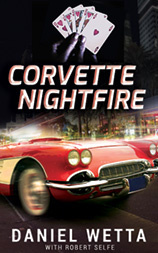 “Love is their Only Defense!”
“Love is their Only Defense!”Corvette and Valentina: Their one dance changes destiny in this cinematographic suspense novel that pits three men in a life or death fight for one woman!
E-book Just $2.99
Print: Retail $17.95
At Barnes&Noble, Apple, Amazon, all online book retailers! Simply click photo above for your purchase choices!
Corvette Nightfire
He is hot, 27, a new World Series of Poker celebrity, and clueless that his destiny will hurl him into a tsunami of danger fifty years in the making. The changes for him begin when a beautiful Mexican woman fleeing gunfire in a casino thrusts a bag loaded with cash into his arms and sprints away. His subsequent hunt for her turns desperate as he becomes the hunted and time runs out for her life to be saved. He has to disappear from public view into a complex underworld, where he encounters ordinary heroes and remorseless enemies who commit heinous evil.
Generations of family sins have forged Corvette’s character. Now he must reconcile the past with the harsh realities of his present. Set in Las Vegas, Barbados and Mexico, Corvette Nightfire, this second book in the suspense series, The Z Redemption Trilogy, takes up where The Z Redemption leaves off and straps the reader into another bumpy, exhilarating ride!







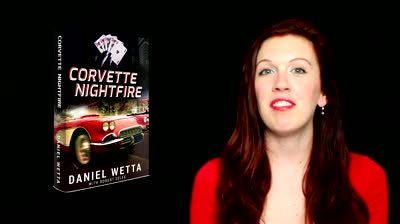
April 13, 2016
Author M J Scott
Daniel Wetta Publishing is excited to announce the release of author M. J. Scott’s new book, Power Steering! M. J. Scott (USA) is the pen name of Marilyn J. Shafer-Asprey, who is a recent Excellence Award recipient from Women of Distinction online.
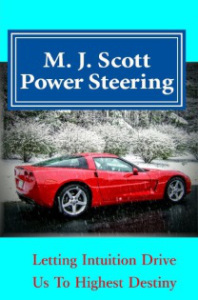
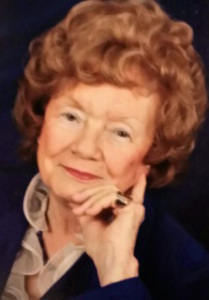
Author M. J. Scott (USA)
Marilyn studied education at Manchester College, earning her BS in Education, followed by her MA in Mass Communications at Norfolk State University. She completed all but her dissertation in the doctoral program of Education Administration at California Coast University. A retired gifted students teacher who began her career working at Dr. Albert Schweitzer Elementary School in Anaheim, California and 20 years in education in the public school systems of two Virginia cities, Marilyn has also spent years with her own photography business and philanthropic work. In 2015 she became co-founder of The Writer’s Council, an organization serving to encourage aspiring writers to achieve their dreams to become published.
Marilyn’s third book under the pen name M. J. Scott, Power Steering, is a series of vignette-style articles illuminating the power of intuitive feelings and insight. In her book, Marilyn makes the reader wonder how our lives would be different if we truly trusted a higher power to guide us. What would it be like to tune into a force that works for our benefit and well-being in a universe so complex that we feel our significance does not even register? Throughout the book, the author uses a car analogy to show what happens when we let higher power drive us on life’s journey: We stay behind the wheel, she shows, but we let “power steering” make our passage much less tiresome. The power steering fluid is intuition, a beautiful and subtle messaging from God. Our learning to recognize it and trust it allows us to make the choices in life that lead us to our most blessed destinations. Through a collection of poetic-narrative meditations and anecdotes in Power Steering, M. J. Scott rolls out the panorama of her own life’s enrichment when she lets intuition take the wheel.
Power Steering is currently available in e-book form through Amazon, Barnes and Noble, Smashwords and all online book retailers including Apple iBooks. The Smashwords link ( https://www.smashwords.com/books/view/610304 ) offers all available file formats for any reading device including Kindle, Nook, Apple and PC. The Amazon link for Kindle readers is http://www.amazon.com/gp/product/B01B52W3CO .
Beautiful print editions of Power Steering are available through Amazon, Barnes and Noble and CreateSpace. Just click on the links below!
Amazon: Click this Amazon link!
Barnes and Noble: Click this Barnes and Noble link!
CreateSpace: Click this Createspace link!
Her two previously published books are Journey Into Fulfillment and Time on the Turn by Xulon Press and available for sale online at Barnes and Noble. Click on the book cover photos below to go to the Barnes and Noble pages for these books!
Learn more about Marilyn and her Excellence Award in Women of Distinction Magazine! Click the photo below!
Learn about other authors of Daniel Wetta Publishing at this link: www.danielwetta.com









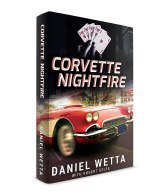








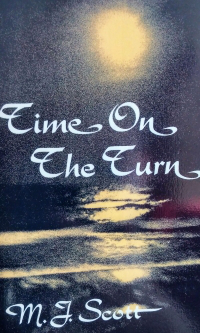







![BookCoverPreview[1]](https://i.gr-assets.com/images/S/compressed.photo.goodreads.com/hostedimages/1460691486i/18774716._SX540_.jpg)
